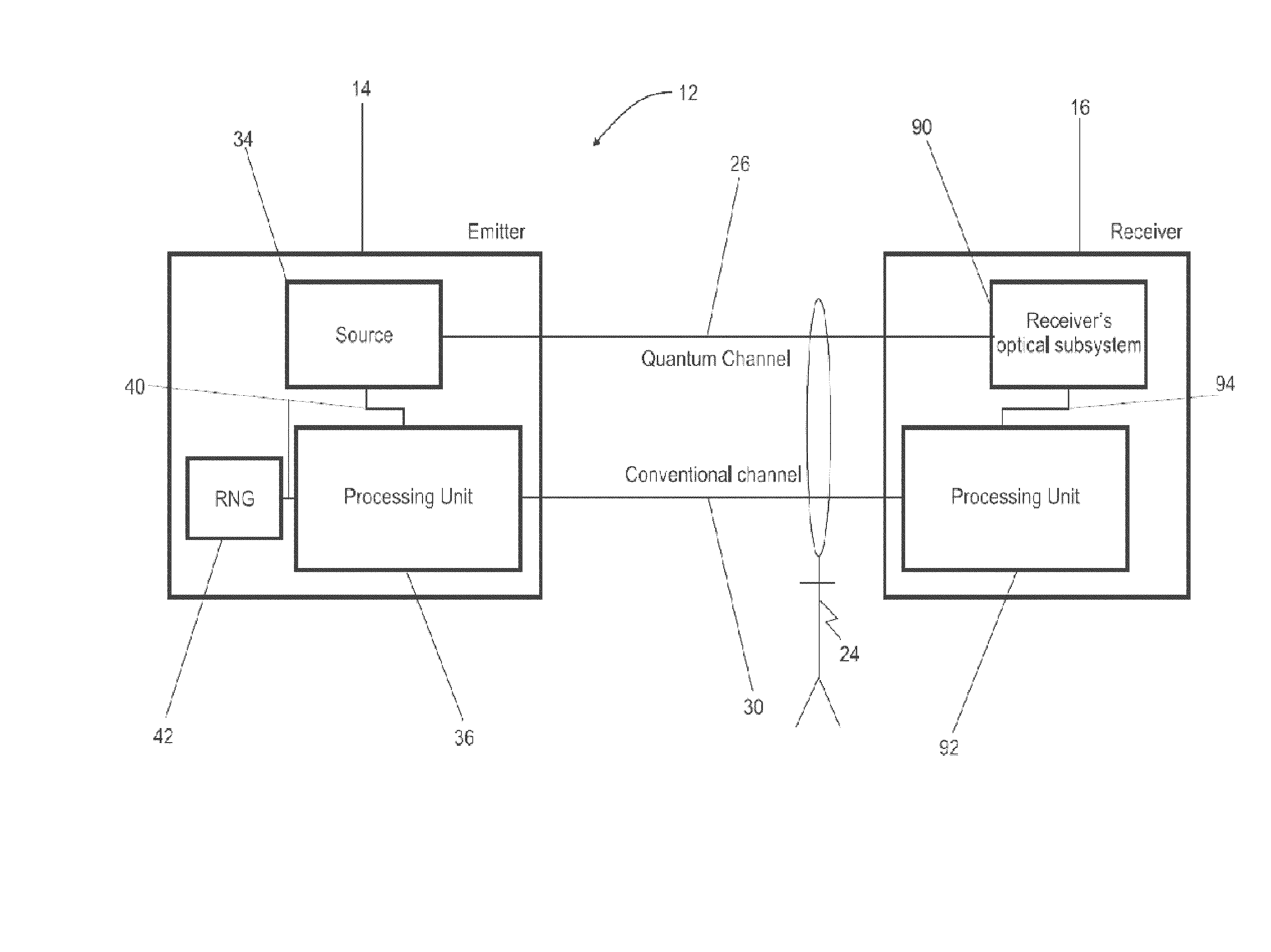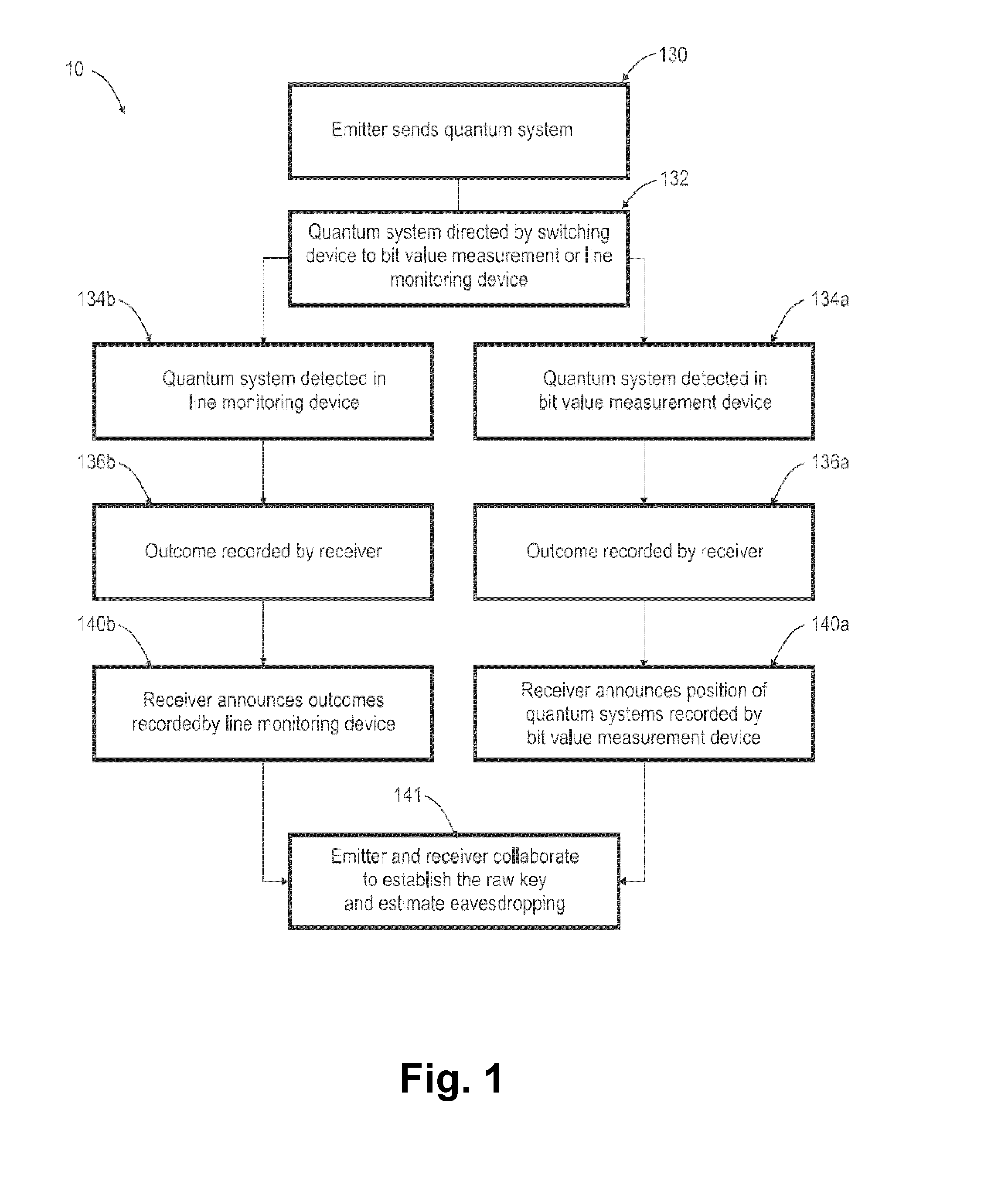Apparatus and method for distributing a string of secret bits over a quantum channel
- Summary
- Abstract
- Description
- Claims
- Application Information
AI Technical Summary
Benefits of technology
Problems solved by technology
Method used
Image
Examples
Embodiment Construction
[0046]In FIG. 2, reference numeral 12 refers to a quantum cryptography communication system or apparatus for exchanging between an emitter station 14 and a receiver station 16 a sequence of symbols via a quantum channel 26, according to the method 10 illustrated in FIG. 1.
[0047]As illustrated in FIG. 3, the sequence of symbols are coded on a stream 22 of quantum systems 20, constituted by pairs of time-ordered coherent states, used to transmit the raw key (e.g. a data string such as 101100101001111001001010 . . . 01010100) and allowing the emitter station 14 and the receiver station 16 to estimate the maximum amount of information an eavesdropper 24 can have obtained on the raw key. This raw key can subsequently be distilled into a secure key (e.g. a distilled data string such as 10011000 . . . 1100 of fewer digits than the raw data string) through an appropriate key distillation procedure, known in the art.
[0048]As shown in FIG. 2, the emitter station 14 and the receiver station 16...
PUM
 Login to View More
Login to View More Abstract
Description
Claims
Application Information
 Login to View More
Login to View More - R&D
- Intellectual Property
- Life Sciences
- Materials
- Tech Scout
- Unparalleled Data Quality
- Higher Quality Content
- 60% Fewer Hallucinations
Browse by: Latest US Patents, China's latest patents, Technical Efficacy Thesaurus, Application Domain, Technology Topic, Popular Technical Reports.
© 2025 PatSnap. All rights reserved.Legal|Privacy policy|Modern Slavery Act Transparency Statement|Sitemap|About US| Contact US: help@patsnap.com



